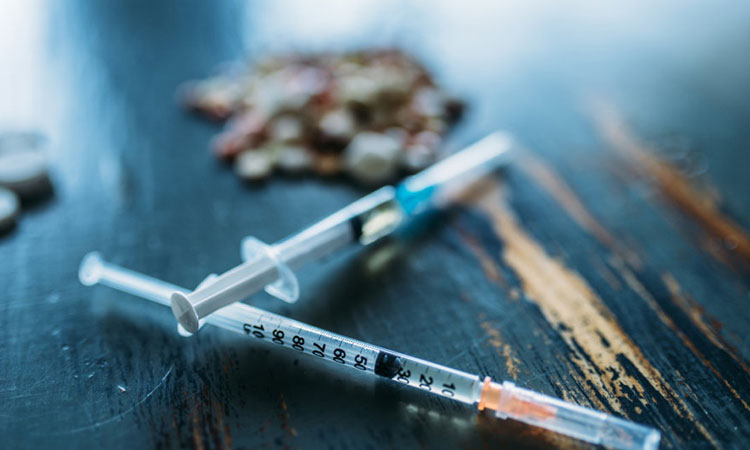
People who battle with speedball drug addiction often spend a copious amount of time chasing the next high, in the hope that it will be better than the one before. Sometimes, in order to get it, they combine multiple drugs together.
While abusing a drug creates a myriad of physical and psychological risks to begin with, mixing different drugs together can result in dangerous situations, such as overdose, or other extreme symptoms or effects that can risk the individual’s health, safety, and life.
Speedballs are one such combination – a powerful mixture that can result in serious consequences, including death, even for those who try it just once.
Elements of a Speedball Drug
A speedball is a slang or street name for a combination of two different drugs: one is a depressant and the other a stimulant. Most frequently, the combination involves heroin and cocaine, both powerful illegal drugs that are risky when taken alone, but far more unpredictable and dangerous when taken together.
Other combinations, which may sometimes be referred to as speedballs can include:
- Methamphetamine or amphetamine as the stimulant
- Other opioid or opiate drugs instead of heroin
- Benzodiazepines (i.e. Xanas) instead of heroin
When a speedball is administered, the heroin and cocaine are mixed together and injected in a single shot, so their effects are felt rapidly and intensely.
According to the National Institute on Drug Abuse (NIDA), at first glance, the combination appears to be a way of avoiding some of the worst side effects of both drugs, while at the same time experiencing a unique euphoric, relaxing, and energizing response that comes from combining the drugs. The going theory is that the energizing effects of the stimulant can counteract the adverse aspects of the depressant while heroin can mitigate some of the unwanted physical symptoms of the stimulant. The reality, however, isn’t quite that simple.
Effects of the Speedball Drug Combo
The full potential effects of heroin and cocaine on each another are not known. However, one thing we do know is that this combination is not just the equivalent of joining the effects of two individual drugs together.
Moreover, the speedball combination has a significant effect on the dopamine system, which is part of what reinforces the desire to keep using this drug combination. This is probably due to the fact that both cocaine and heroin heavily impact the dopamine system, resulting in an aggregate effect rather than a reaction affected by one drug or the other.
This powerful action on dopamine offers reinforcement for the continued use of speedballs, which can be very risky due to the combination of the two drugs, how they act on the body, and the potential physical and emotional consequences of using the drugs in conjunction.
Risks of Speedball Drug Use
Using speedballs can also increase a person’s risk for mental health conditions, such as:
- Depression
- Severe anxiety
- Suicidal thinking
- Psychosis
- Addiction
One of the greatest risks of using speedballs, according to NIDA, is due to the fact that the effects of cocaine subside much faster than heroin. Because the primary reason for using the two drugs together is to minimize the negative effects of each, people who use speedballs mistakenly believe they can use more of each drug than would normally be possible with just one drug.
As a result, if the individual uses much more heroin than their system can handle, the body can invoke an overdose response when the cocaine effects abate, leading to severe physical and mental consequences. The person’s breathing can slow, become labored, or stop to a degree that can put the person’s life at imminent risk.
Long-Term Effects
The greatest potential long-term effect of speedball use is the increased risk of overdose or other complications from the combination of drugs involved. These effects can create a number of dangers for the person’s health. As a result of long-term use, the person can experience:
- Overdose, resulting in a fatality
- Damage to veins and circulation
- Limb damage or loss due to poor circulation
- High fever
- Infection
- Back pain or other pain
- Coma or death
These and other symptoms can lead to life-changing circumstances in addition to brain damage and anhedonia, a condition in which the person is unable to experience pleasure due to severe damage to the dopamine system.
Treatment for Addiction
According to an article from NIDA, one challenge when approaching speedball abuse is that treatments used heroin addiction are only somewhat effective in helping those who use speedballs. There is no medication for the treatment of cocaine addiction, and the drugs indicated for heroin addiction can be difficult to discontinue and not particularly helpful in achieving recovery from speedball abuse.
However, there are some psychotherapies and other treatments that do not involve medication that can help people learn to handle their addictions. These therapies have been shown to be effective, especially when employed in long-term addiction treatment programs, including inpatient, partial hospitalization, and intensive outpatient formats.
Harmony Treatment and Wellness offers these treatment modalities and more in partial hospitalization and outpatient formats. We employ highly-trained, caring staff to facilitate services to the patient with compassion and expertise. We aim to provide our patients with all the tools they need to achieve a full recovery and go on to sustain long-lasting sobriety, happiness, and wellness.
⟹ READ THIS NEXT: Signs of Heroin Addiction
